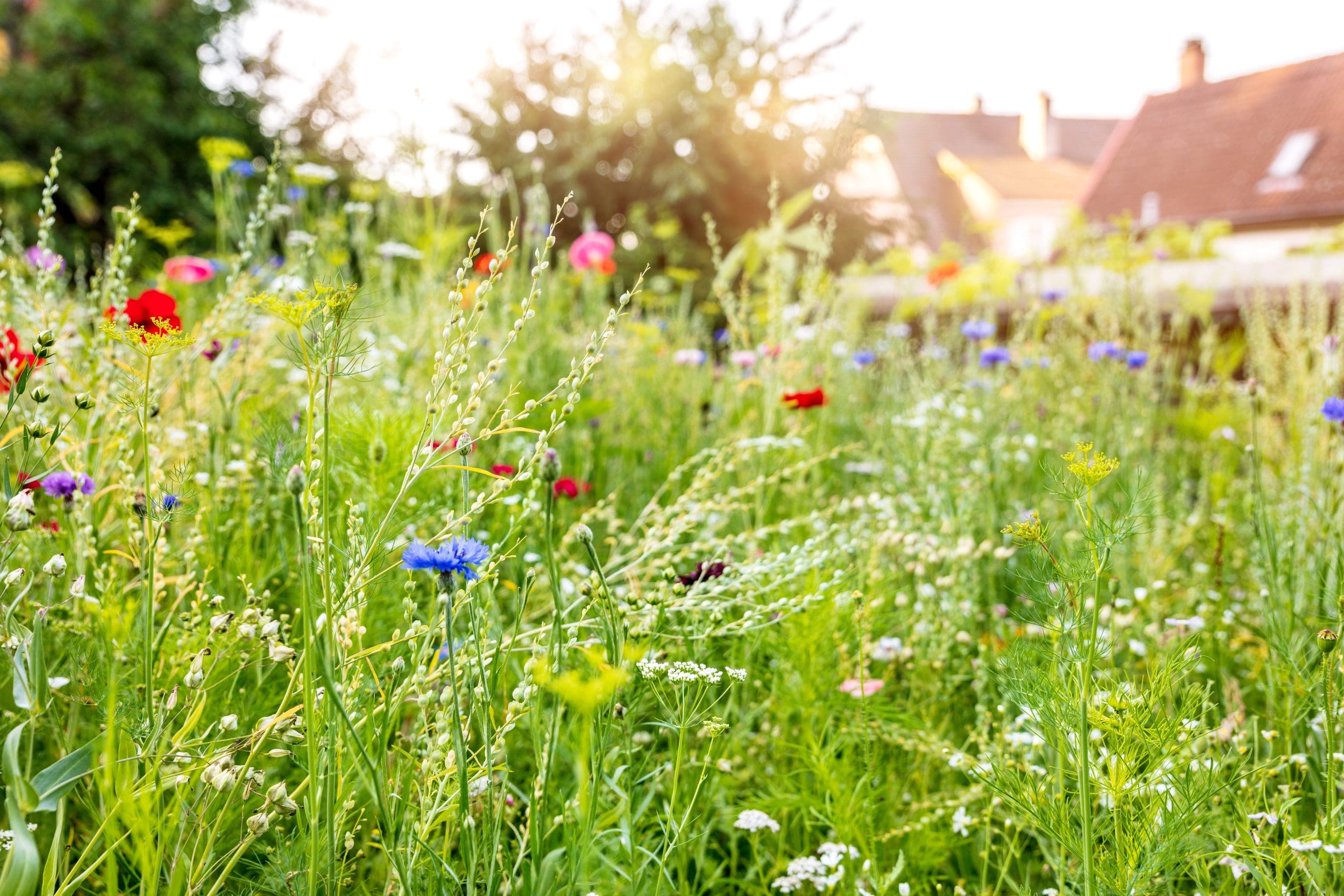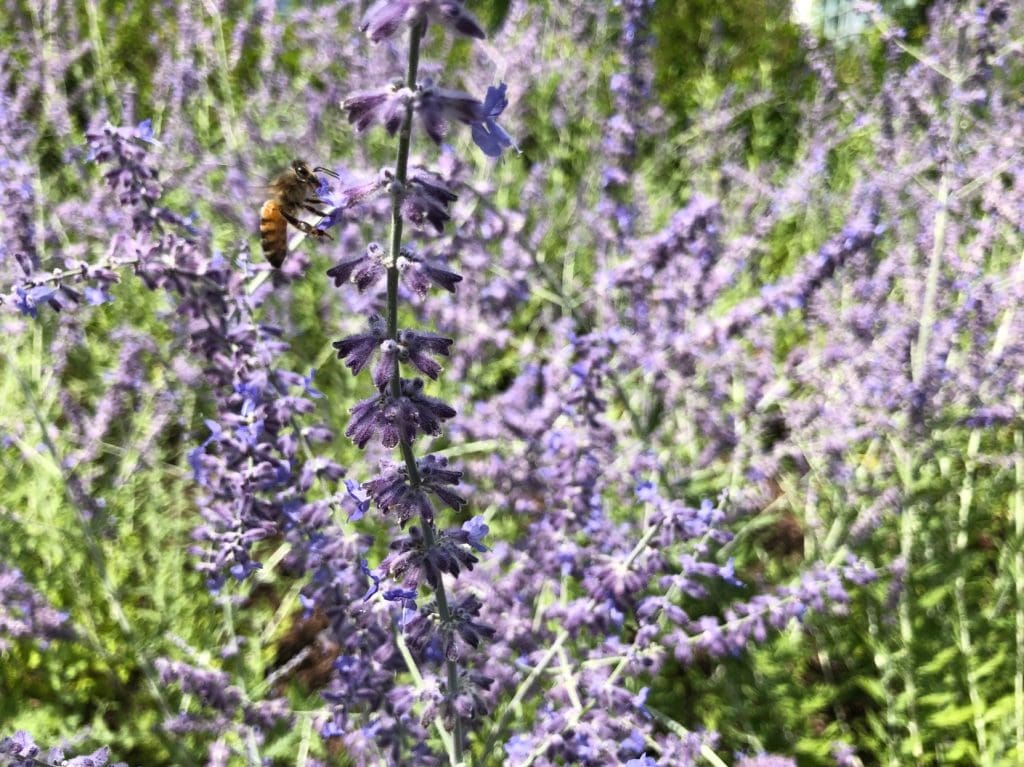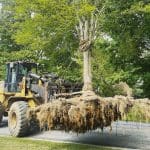
If your client has a pollinator garden, prairie or other habitat installed for pollinators on their property, they may think the natural-looking area calls for no maintenance at all. However, competition from weeds and invasive species can degrade these habitats if not properly maintained.
A functional pollinator habitat has features including:
- Diverse, pollinator-attractive species with no single species dominant.
- Species that bloom in overlapping sessions from spring to fall, with many species blooming at any given time.
- Desired plant species persist over time.
- Weeds present are non-invasive and not competing with desirable species.
Pollinators need both nectar and pollen in their lifecycles, so avoid hybrid plant varieties that have been bred without pollen, nectar or fragrance. The Xerces Society has region-specific lists of recommended native plants that are highly attractive to pollinators here.
Although not bee-attractive species themselves, grasses help provide vegetation structure, nesting or overwintering sites for pollinators and other wildlife. They should be managed so they don’t dominate wildflowers in the pollinator habitat.
One of the main goals of managing these spaces is to maintain a diversity of bloom, which is overlapping bloom periods of at least two to three species during each season with minimal or manageable weed pressure. Many pollinators are only active during a portion of the growing season and require a steady supply of pollen and nectar, which is why overlapping bloom times is so important.
Monitoring
Just like any other part of your customer’s property, it is best to actively identify any potential problems before they become issues. This can help reduce costs and prevent your client from having to restart the project if the site is too far gone.
Monitoring these pollinator habitats should take place throughout the growing season to help identify gaps in blooming and if an undesirable species is becoming dominant. Knowing which plant species should be present can help answer the question of what species are in a site and their density. You should also monitor plant diversity for both wanted and unwanted plant species.
By tracking these two metrics, you can determine if a plant species is at risk of disappearing or is becoming too dominant in a site. Setting thresholds based on your site can help you know when action is warranted.
Management Methods
If in the monitoring phase you determine that the pollinator-friendly plants are not diverse and dominant enough in the habitat, various management activities are available to remedy this. Depending on the selected management method, timing is important to both control weeds and limit the impact on wildlife such as pollinators and nesting birds.
If you realize there are gaps in blooming times, interseeding or planting additional species whose bloom period overlaps those gap times can help extend the season. If your client has mainly annuals, encourage adding more perennials so these sources of pollen and nectar can be counted on to return year after year.

When dealing with one native species becoming dominant or undesirable plants like weeds or invasives taking over, mowing or spot-spraying are some management methods. Seasonal mowing or rotationally mowing can help specifically with increasing plant diversity.
If you need to reduce the abundance of a dominant species, mow when that plant is most vulnerable during active growth before blooming or the seed is set. Rotational mowing calls for mowing sections of the habitat at different times of the year, allowing different sets of species to thrive.
Mowing to control weeds should happen before the weeds set seed, which is particularly effective for annual weeds. Perennial weeds may need to be mowed multiple times to reduce seed set and plant vigor. Mowing is only a good idea if the weeds grow significantly taller than the flowers or if the weeds are gathered in specific areas. Be mindful of the characteristics of the target weeds, as some are stimulated by mowing.
Hand-weeding is recommended if there are a low number of weeds scattered throughout the pollinator habitat. If spot-spraying with herbicides is deemed necessary, avoid spraying when the weeds are in bloom, as it is the least effective then and can expose pollinators.
Evaluate
Tracking the effectiveness of a management action and the conditions it fosters is key to ensuring the pollinator habitat’s success. Record your actions and results so you can alter the technique’s timing, add another strategy or change methods altogether.
Pollinator habitat management is a long-term commitment and requires regular adapting to maximize success.


